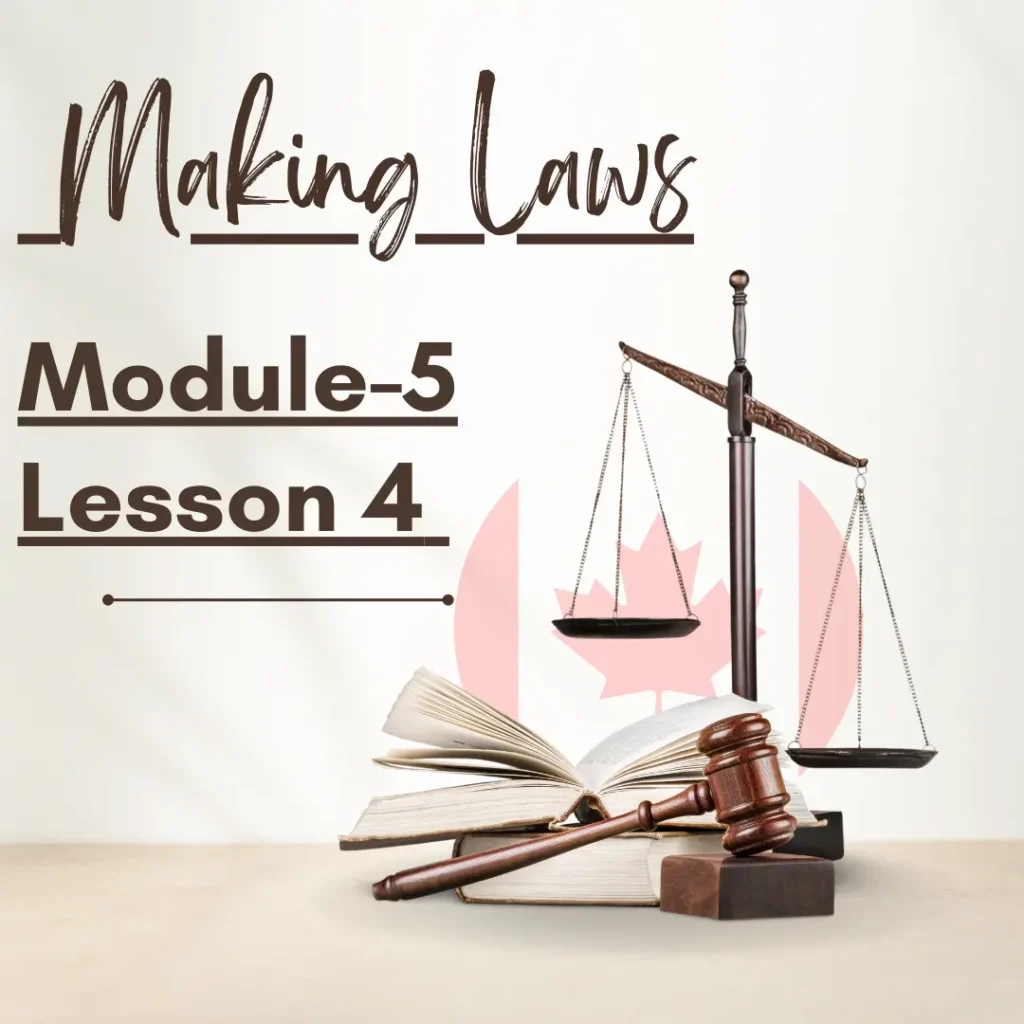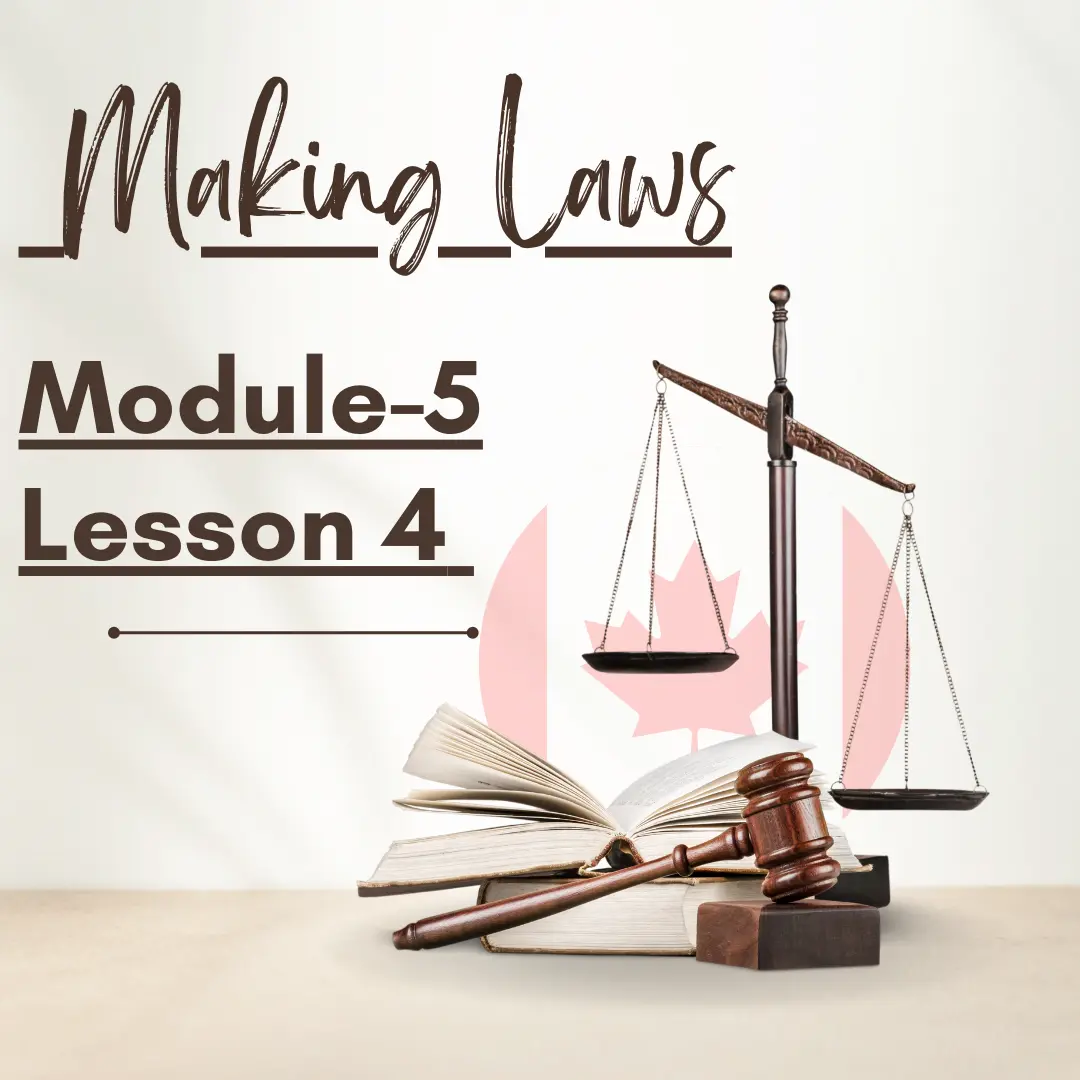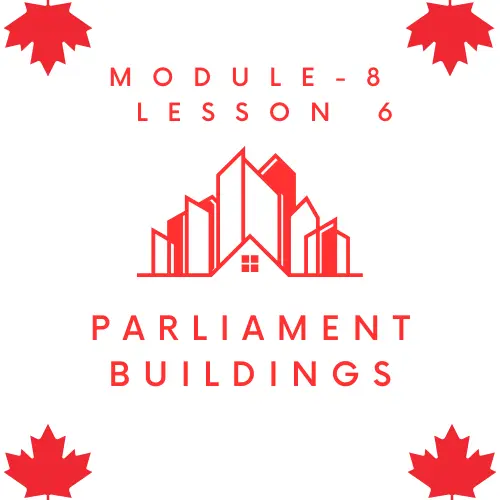Module-5 Lesson 4 Making Laws
Making laws and the legal framework it creates for its citizens is an essential part of any democracy. Canada’s federal democracy employs an inclusive and complex system to create laws. This essay examines the complex mechanisms that are involved in creating laws in Canada. It looks at the role of the various legislative branches and their legislative processes, as well as the effect of new legal developments on Canada’s diverse populations.
The Legislative Framework:
Canada’s legislative structure is characterized by a federal system, comprising two distinct levels of government: the federal government and the provincial/territorial governments. The federal Parliament of Canada is bicameral and consists of two chambers: the House of Commons, as well as the Senate. Every province or territory has its legislative structure, mirroring the federal one. It includes a legislature and in many cases a legislative council, as well as a legislative body.
House of Commons
House of Commons, the lower chamber of Canada’s Parliament, plays a key role in its legislative process. The Canadian people elect the Members of Parliament, also known as House of Commons Members (MPs), in federal elections. The majority party in the House forms a government and the leader of that coalition becomes Prime Minister.
Senate
Senate is an upper chamber of parliament composed of senators who are appointed by Governor-General on advice from the Prime Minister. It is the Senate’s job to give a second, sober thought about proposed legislation. Senators, who are chosen by the president and are responsible for representing the various interests of the nation are also expected to contribute impartially to the legislative process.
The legislative process:
Canada’s law-making process is multi-stage and comprehensive. Both houses of parliament are involved. From conception to implementation, a bill’s journey is described as follows.
1. Introduction: Bills may be presented in the House of Commons or Senate. The bills are read and discussed in their place of origin.
2. Committee stage: After a bill has passed member of senate or committee will examine its first reading.The committee stage is a time for more detailed discussion and possible amendments.
3. Report stage: the committee presents any changes recommended to the House. The members or senators may debate the recommendations and propose additional amendments.
4. Third reading: This is the final version of a bill. The bill is presented to the members or senators for a third reading.
5. House of Second Reading In The Other House If the bill originates in the House of Commons, it will be sent to the Senate, and vice versa. Second house: The legislative stages are repeated in the second chamber.
6. The bill is then sent to the Governor general for his royal assent. The bill is law once it has been granted and known as Act of Parliament.
The Constitution and Legal Developments:
Canada’s law is dynamic and changes to meet the needs of its many diverse citizens. The Charter of Rights and Freedoms is a document incorporated into the Constitution Act of 1992.The Charter of Rights and Freedoms guarantees rights and liberties fundamental to the nation and ensures that all laws adhere to democratic principles and personal freedoms.
Indigenous Laws , Rights and Reconciliation
Over the past few years, the emphasis has shifted to recognizing and respecting Indigenous rights in the legislative process. In recent years, efforts towards reconciliation led to an inclusion of Indigenous perspectives into lawmaking. This is especially true in areas that affect Indigenous communities. The inclusion of Indigenous perspectives in lawmaking, particularly on matters affecting Indigenous communities, reflects the commitment to recognize the unique legal and historical status of Indigenous Peoples in Canada.
Diverse and inclusive:
Canada, a country known for its rich cultural diversity and inclusiveness in the legislative process, places great importance on this. It is important to have diverse voices represented in the Parliament. This includes women, minorities and other ethnic or religious groups. Diverse political representation can lead to more inclusive and equitable legislation.

Conclusion:
Canada’s legislative process is dynamic, inclusive, and reflects the values of diversity, democracy, and constitutional government. Canada’s bicameral system of parliament ensures that legislation is subjected to rigorous examination and debate. The Charter of Rights and Freedoms and constitutional principles guide the development of the law, which is a commitment to social justice and individual liberties. Canada’s legislative framework continues to adapt to meet the diverse needs of the country, contributing to its identity as an inclusive and vibrant democracy.






